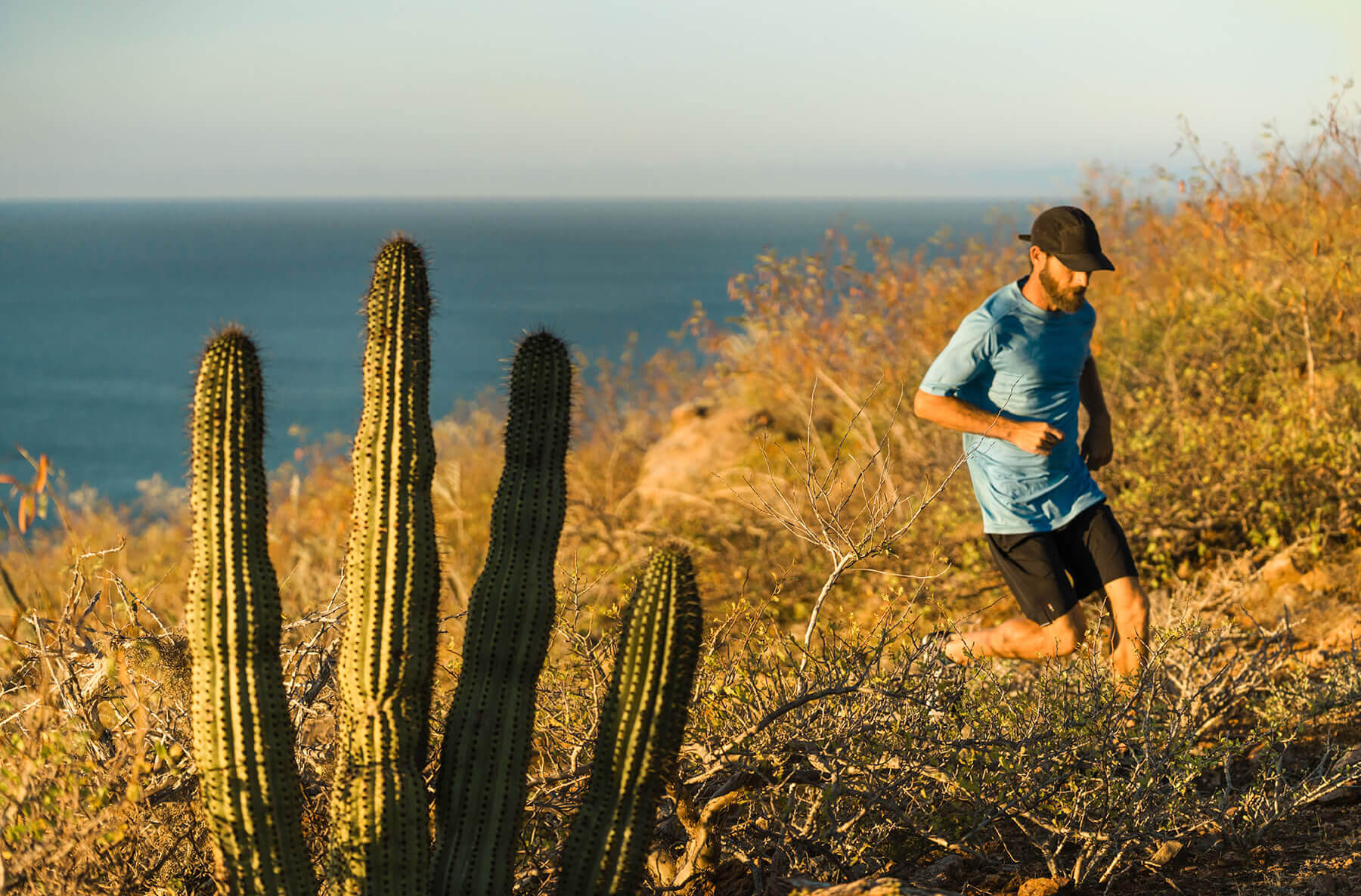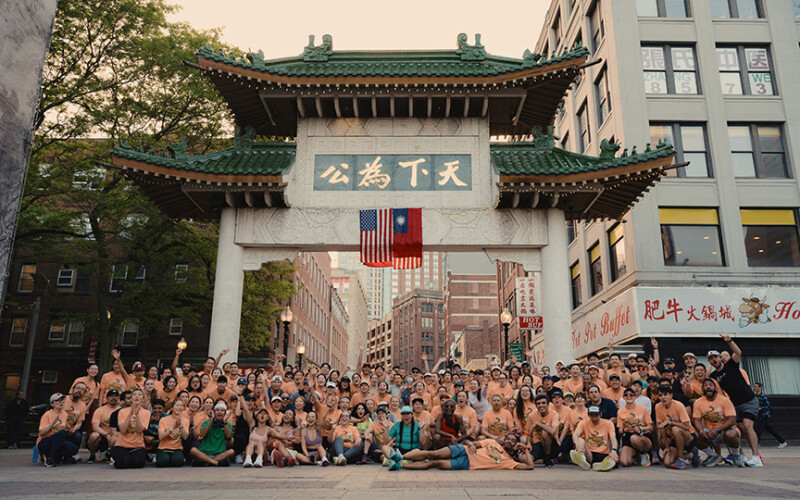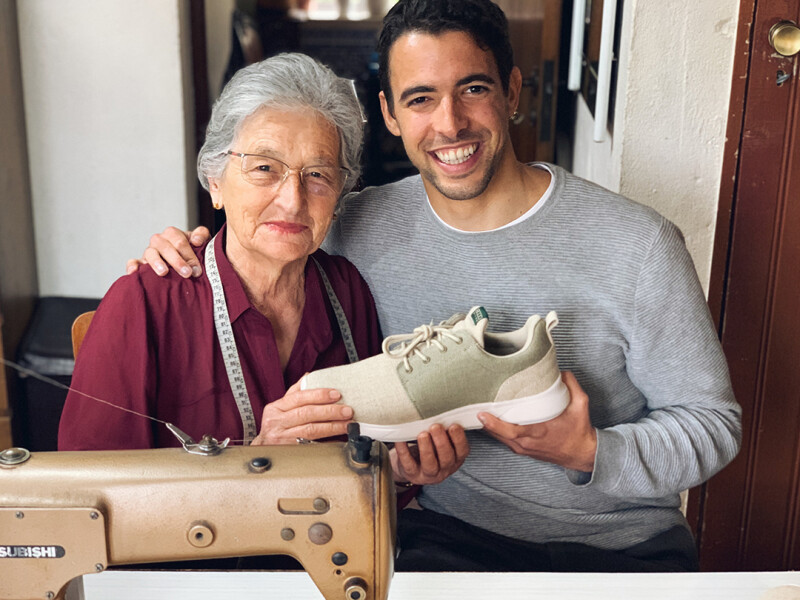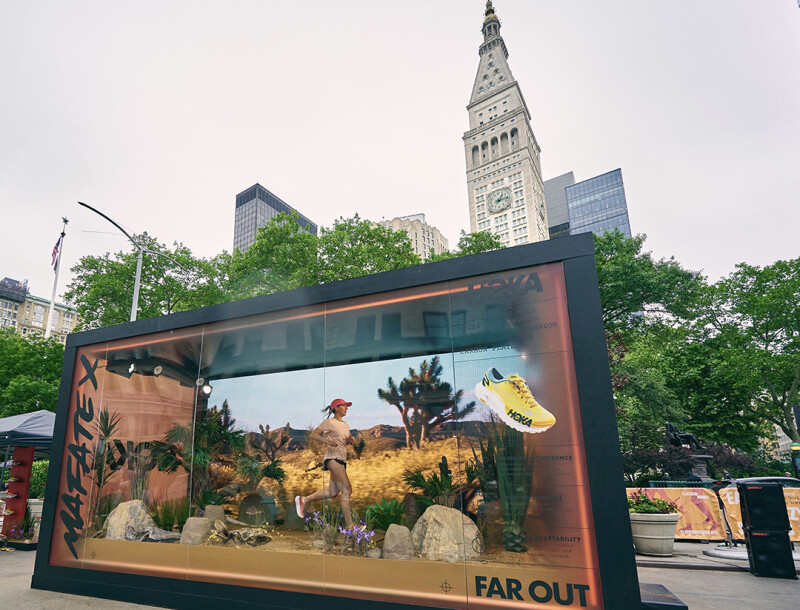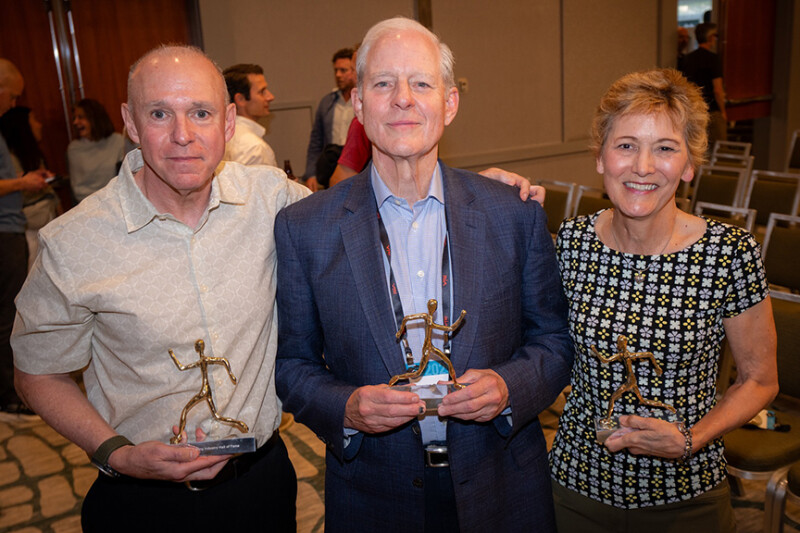There is no question that outdoor activities such as trail running are continuing to resonate with a widening swath of Americans who want to unplug from harried lives and immerse themselves in nature, if even for a short while. Among the sport’s many draws are that it’s fun, easier on the body than running on pavement, far less boring and repetitive than indoor gym workouts, plus it often provides beautiful scenery and has an engaging social aspect.
“As congestion in urban areas increases, our need to ‘get away from it all’ has boomed. Trail running provides a unique connection to nature that’s hard to obtain while surrounded by the peripheral sounds of the city,” says Dave Wittlinger, national sales director for Venga Endurance. “Feeling at peace with Mother Nature has proven beneficial to our state of mental health.”
The SFIA’s 2019 Topline Participation Report for Trail Running reveals that there were just over 10 million participants in 2018, up 9.4 percent from 2017, and accounting for five-year average annual growth of 8.1 percent. The upshot is that despite being a far smaller market than road running, trail running is flourishing and thanks to an ever-increasing roster of races and events, it remains an important growth category for vendors and retailers
Off the Beaten Path
“I think there are a few reasons for the increased popularity in trail running. Having been around the sport for over 30 years, I see so many more events and races than ever before. They’re all of different distances, but I especially see more long-distance races that require more training and preparation and probably deliver more gratification once completed,” observes Tony Post, CEO and founder of Topo Athletic. “It can be a social experience but it’s still very challenging and rewarding once completed. I think the challenge is different and more interesting than traditional road running when you throw in different types of terrain, elevation, vertical gains and descents that may require hiking and walking in addition to running. But above all, I think people just have a love for being in that environment: in the mountains, woods and deserts. It’s satisfying the instinct we have to be in nature.”
Nilou Mozafari, design manager for performance at The North Face, concurs. “In an increasingly digital age, we’re expressing a need to connect back to nature. When you run a trail, there’s a level of spontaneity and the unknown so you reset and rely on all of your senses to guide you. As a result, you end up feeling more centered, more human,” he says.
Although many trail running market experts agree that the sport’s hotbeds in the U.S. tend to be mountainous and rugged regions (think: Rockies, Sierras, Appalachians), Jared Smith, product line manager for trail run at Hoka One One, points out that it’s not necessary to be near the mountains to get onto a trail. “The overall growth in the U.S. and globally is based on experiential adventure, and it spans a broad array of age groups. The opportunity to get out and explore someplace new is becoming more attractive and differs according to location,” he says. “There’s an advent of more people talking about going to local parks and trails that aren’t necessarily near mountains.”
Just as importantly, Smith has noticed that the urge to explore ties into social media because the experiences are “Instagramable” and easy to share with friends and family. “This influences what’s accessible and available in local areas and helps to identify local trails. Experiencing things rather than buying things is becoming more prevalent now.”
Kevin Fitzpatrick, New Balance’s GM for performance footwear, expands on this idea by commenting, “We live in a new age of digital entertainment. With increased subscriptions to streaming services, people have more access than ever to incredible content that showcases all of the adventure and challenge that trail running can offer.”
Moreover, Zach King, SmartWool’s product line manager for men’s socks, believes the sport is showing maturity with improvements in inclusivity. “Trail running is no longer limited to eccentrics and elusive mountain people, but instead has formed communities within the heart of major cities [as well as] core outdoor communities,” he explains. “Trail running includes everyone from walkers to elite runners, and every age, race, sex, size and background.”
While traditional regions within the American West remain magnets for the sport, many brands are seeing a significant amount of growth in densely populated areas, specifically in the East and Southeast. “From Washington, DC, to Atlanta, Georgia, there are communities rich in road running history combined with an abundance of trails and open spaces to play outdoors, and these forces have helped some of these areas shine in trail running,” Smith says.
Trail running is also drawing road runners who are seeking relief from years spent pounding the pavement, according to Katie Pyle, product line manager for Saucony Trail. “Trail running often requires the use of different muscles, so it can be beneficial from a strength and balance perspective,” she says. “There are so many more ways to participate in the sport than ever before — many different race options and distances, group runs, and information and education around the sport.”
Racing for Growth
On the competition front, there is growing interest in multi-day and festival-based trail running events, notes Steve Aderholt, VP–operations for Ragnar Relay. “These events do a great job of capturing the broader community feel of trail running while still providing experiences in more destination-type environments. Multi-day events are providing options for a ‘runcation’ spent on trails both in the U.S. and abroad.” He adds, “It will be interesting to see how those grow as the base of trail runners grows, as it is unique to trail versus road running.”
Inga Johnsn, Ragnar Relay’s CMO, notes that many Ragnar participants are drawn to trail running because they are craving a new challenge and are actively replacing road events with races held on trails. “We have 20 races now spread across the U.S., and honestly we’ve seen great interest in so many areas of the country that no one geographic area pops out,” she exclaims. “We will continue to add more races in both the U.S. and abroad, with new races already launched in Mexico, Australia and the U.K.”
Johnson notes that Ragnar is also expanding new formats in the U.S. to capture more beginners as well as those ready for additional challenges. These efforts include single-day events that require less of a time commitment than regular overnight races, and the addition of a “Black Loop” at select Ragnar events that nearly doubles the mileage.
Ragnar’s other key initiatives involve sustainability, such as holding cupless races, putting solar panels on race trucks, and making composting/recycling commitments. Earlier this year, Ragnar launched its “Size Matters” campaign that encourages runners to leave a smaller carbon footprint at events by purchasing offsets. These programs involve Ragnar race partners including Nathan, which supports cupless initiatives; Craft, which provides eco-friendly participant T-shirts; and Merrell, which produced a mini-documentary showcasing the work of Ragnar trail sweepers.
Devoted to the Trail
In the greater scheme, many vendors that once concentrated primarily on road running are now devoting more attention and resources to the trail side of the business. For example, Saucony will launch a trail-specific apparel and accessory collection in Fall 2020. The company also recently signed a long-term deal with Grayson Murphy, the 2019 Women’s Mountain Running Champion and five-time All-American from the University of Utah, to further elevate the brand’s commitment to the women’s trail running community. A variety of race sponsorships and a new program with the American Trail Running Association are also part of the mix. And New Balance is now launching New Balance All Terrain, a seasonal outdoor collection designed to easily go from trail to street.
“As marathon participation begins to level out following years of steady growth, athletes are looking for new ways to challenge themselves,” says New Balance’s Fitzpatrick. “We’ve also seen an increase in race-related travel where runners are choosing events based on location. Trail running easily fits both of these criteria by allowing runners to experience a new challenge in some of the most beautiful places in the country.”
At present, trail running accounts for about 10 percent of New Balance’s total running business, driven in large part by the success of the category in the brand’s European markets. “We are refocusing our efforts in [the trail running] space and we believe there is a lot of opportunity to differentiate and grow the category,” he says.
Not surprisingly, for many brands rooted in the outdoors, trail running continues to be a growth driver. “Trail running footwear is the fastest-growing category for adidas Outdoor,” says Patrick Tullos, senior manager of brand communications and sports marketing for Adidas Outdoor. “We expect the [entire] category to be very strong for the foreseeable future.” At Topo Athletic, Post reports that, “Trail running is 50 percent of our business today—and that’s pretty much the same in the U.S. and Europe. Compare that to just three years ago when it was maybe 20 to 25 percent of our total.” He expects continued growth “as more runners discover a more serene experience of being in nature.”
Even for a supplier such as Boa Technology, which is involved in a variety of categories ranging from biking and snowsports to running, hiking, golf and more, trail running is one of the company’s fastest-growing segments. “Trail Running will be one of the largest contributors within our athletic unit in the next five years and it’s a key segment that we’re highlighting to be a core business,” says Eric Weis, Boa’s global business unit director, athletic. “Trail running is a growing sport and an area in which we’re seeing lots of product innovation. This aligns with our goals of enhancing product performance through fit.”
As more people venture off-road, vendors and retailers are doing their best to serve the market with new technologies and innovations across a broad product spectrum. Key trends and developments include:
- The continuing evolution of light and fast gear
- Customizable footwear
- Advancements in rugged and lightweight durability, as well as versatility in grip and traction for footwear
- The crossover of trail-inspired footwear, apparel and accessories into the outdoor lifestyle market
- A bigger focus on women’s-specific designs across all categories
- Greater use of sustainable materials and eco-friendly manufacturing practices
- In the nutrition category, increasing interest among runners to learn more about the products they put into their bodies, most notably CBD.
“You’re constantly seeing athletes set new standards for trail running, and there’s a lot of attention on how people are building out their kits,” says The North Face’s Mozafari. “Focusing on lightweight, sustainable, and protective options, people are invested in high-quality, reliable gear.” He notes that the market is moving away from bulky garments and toward layering systems, and there’s also a focus on women’s-specific design. Storage and packability are important product attributes, as well.
Nick Clinton, product line manager at Brooks Running, believes the fastest-growing need in trail running footwear is underfoot cushion because it can provide propulsion, shock absorption, adaptability over uneven terrain, connection to the trail, and/or protection. “It’s important to minimize the distraction of discomfort so you can properly enjoy the beauty of the outdoors. What’s equally important is to pick the right trail shoe for your needs and [end-use],” he says. Toward this end, the company has a strong partnership with its elite trail running group, the Off-Road Runners, and also regularly connects with the trail running community for insights, product testing and feedback.
However, Casper Copetti, co-founder of On, warns that to be just a trail brand is a tricky proposition. “Often, trail running is equated with ultra marathon running, which eliminates a lot of people. There’s almost a gradient between trail running and speed hiking,” he says. At present, trail running comprises about six percent of the brand’s U.S. business, and On is currently developing product for less-technical trails such as fire roads. Copetti echoes the sentiments of many in the market when he says, “Trail running is a great way to reconnect with nature, and the whole trail and outdoor business is very close to our heart.”
